- EQUIPMENT
- special cranes
-
Industry Crane
-

Industry Crane
-

Tundish Cranes
-

Slab Cranes
-

Scrap Cranes
-

Billet Cranes
-

Coil,Bar and Plate Handling Cranes
-

Cement And Precast Crane
-

Power Station Crane
-

Ladle Cranes
-

Paper Industry Cranes
-

Waste to Energy Cranes and Biomass Cranes
-

Tailored Overhead Cranes for Aerospace: High Precision, Efficience, Safety and Reliability
-
- Hoist & Winch Trolley
-
CRANE Spreader
-
Crane Electromagnetic Lifting Magnets
-

Lifting Electromagnet for Turning and Side Hung
-

Lifting Electromagnet for Thick Plate
-

Specialized Electromagnet for Lifting Steel Plates
-

Lifting Electromagnets for Lifting Steel Plates
-

Lifting Electromagnet for Heavy Rail and Profiled Steel
-

Lifting Electromagnet for High Speed Wier(Coiled Bar)
-

Lifting Electromagnet for Rebar and Steel Pipe
-

Lifting Electromagnet for Bundled Rebar and Profiled Steel
-

Lifting Electromagnet for Billet, Girder Billet and Slab
-

Lifting Electromagnet for Steel Scraps
-
- Crane Spreader
- Crane Lifting Tongs and Clamps
-
Crane Electromagnetic Lifting Magnets
- CRANE PARTS
- Transfer Cart
16 Key Advantages and Disadvantages of Electromagnetic Cranes: What You Need to Know for Your Industrial Needs
Table of Contents
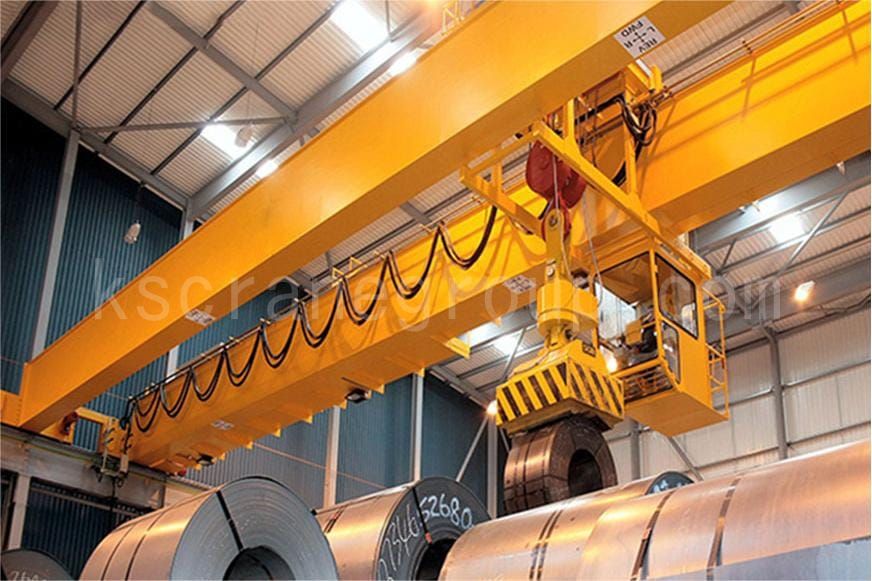
An electromagnetic crane is a device that uses an electromagnet to transport steel materials. When the current is switched on, the electromagnet firmly attracts the steel items, allowing them to be lifted and transported to the designated location. The magnetism disappears once the current is switched off, and the steel items are released.
With the in-depth research and application of electromagnetic principles, the design and manufacturing of electromagnetic cranes have been continuously improved and refined. The following will provide a detailed and comprehensive discussion of the advantages and disadvantages of electromagnetic cranes, helping users better understand and utilize them.
Advantages of electromagnetic crane
- Versatile applications across multiple industries
One of the key advantages of electromagnetic crane is its versatility. The magnetic force can be adjusted according to the weight and material of the object being lifted, allowing the magnet to be used for various types and sizes of metal workpieces. Electromagnetic cranes are widely used in everyday industries such as scrapyards, steel mills, shipbuilding, automotive, and construction. - No need for manual assistance during lifting and lowering
When lifting steel coils, the operation of an electromagnetic crane is more convenient and safer compared to using C-hook lifting devices. With a C-hook, when lowering the hook to about 0.5 meters from the end face of the steel coil, the hook must be stopped, and a worker must guide it, slowly moving the hook so that the bottom support beam of the C-hook is inserted into the coil hole and the inner side of the vertical beam is tightly aligned with the end face of the coil. The hook is then slowly tightened, and checked for correctness, and only after the worker has moved away can the lifting operation proceed. When lowering the load to the designated position, the worker must guide the machine to slowly move the hook, pulling the C-hook’s support beam out of the coil hole.
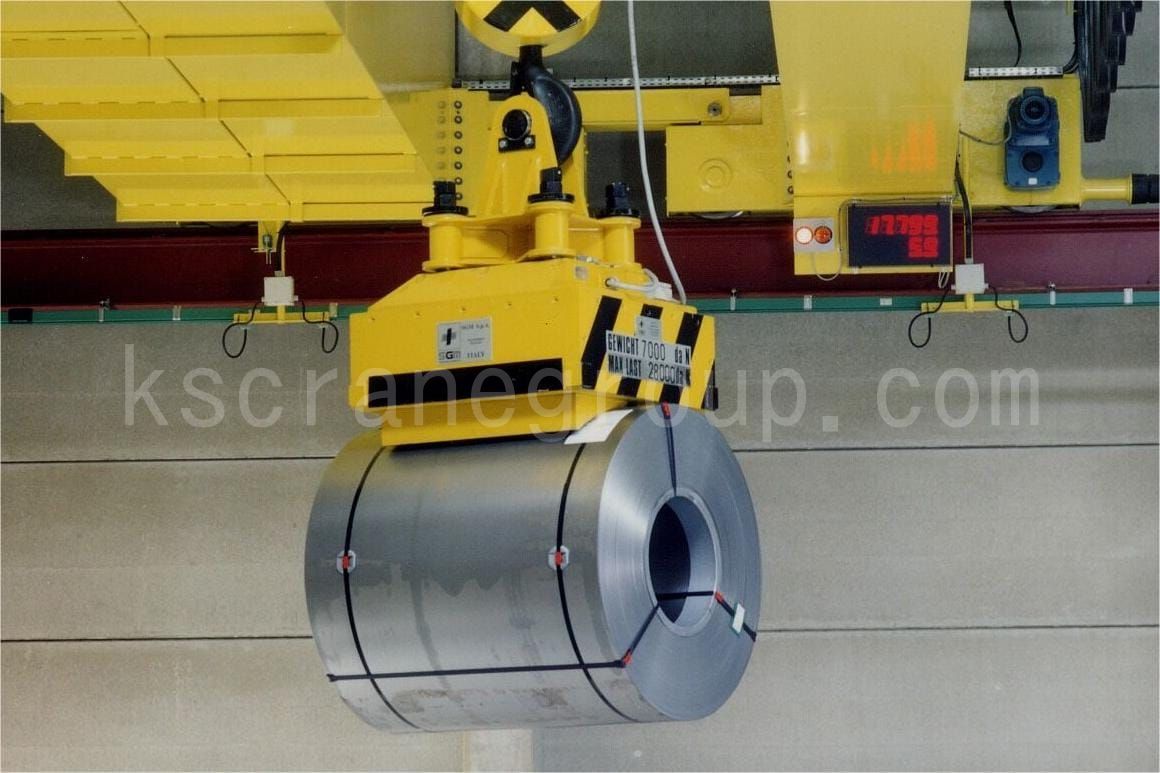

- Ability to select objects to be lifted (e.g., steel)
- The magnetic force can be adjusted flexibly, offering strong controllability.
The presence or absence of magnetism in a lifting electromagnet can be controlled by switching the current on or off. The strength of the magnetism can be controlled by adjusting the current intensity, the number of coil turns, or by changing the resistance to control the current. The polarity of the magnet can be controlled by changing the direction of the current. - Lifting electromagnets can perform multi-lifting and single-release of steel materials
- Electromagnetic cranes are equipped with a power-off magnetic retention system. With built-in energy storage equipment, there is no need to worry about safety during power outages, ensuring high safety performance.
- Electromagnetic cranes are extremely convenient to use
They can attract various shapes of steel items without the need for packing or bundling, making it easy and quick to collect and transport materials. This not only reduces physical effort in operation but also simplifies the workflow and decreases the need for additional personnel.
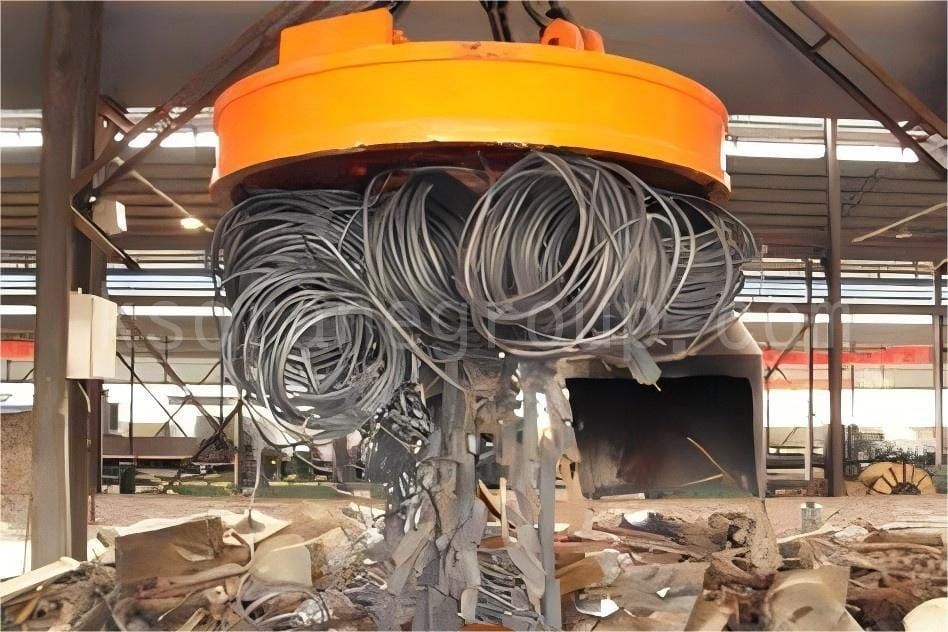
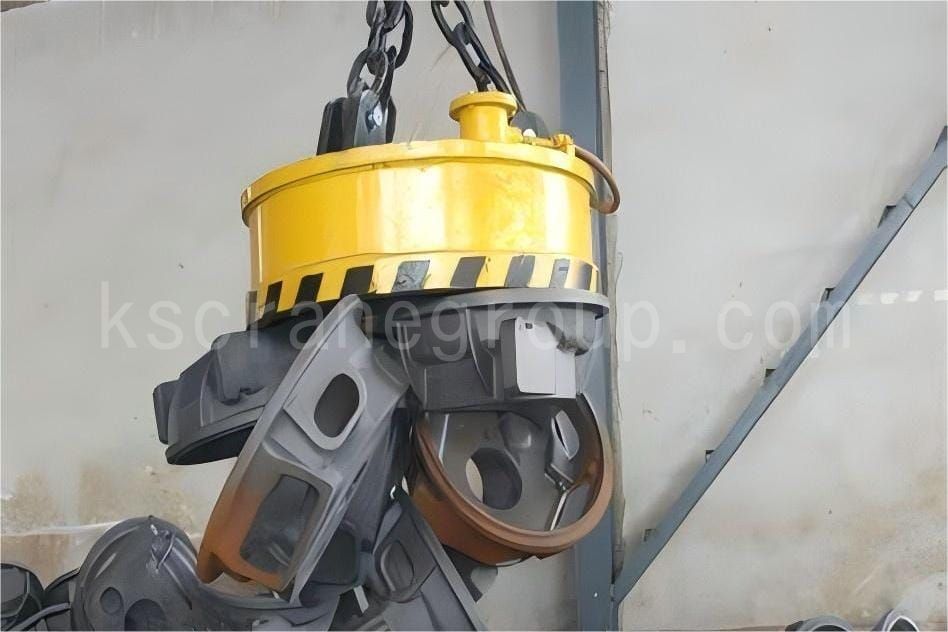
- Safe operation
With a reliable power supply, electromagnetic cranes have a lower risk factor. The magnetic force of an electromagnetic crane is more reliable than the chains used to secure items on a conventional crane. - Strong lifting capacity and high efficiency
The electromagnetic effect of the crane’s magnet can generate powerful lifting force, thereby increasing the speed and efficiency of loading and unloading operations. - Easy installation and maintenance
The components are easy to maintain, making the crane simple to install and upkeep.
Disadvantages of electromagnetic crane
- High power consumption
It requires a continuous flow of electricity to achieve magnetization and demagnetization, and the electromagnet heats up quickly. Due to this heat generation, there is a significant loss of electrical energy. Electromagnetic cranes consume a large amount of power. - Limited to lifting certain metal items
Electromagnetic cranes can only transport ferrous materials. They can only lift magnetic objects, so they cannot attract non-magnetic materials.
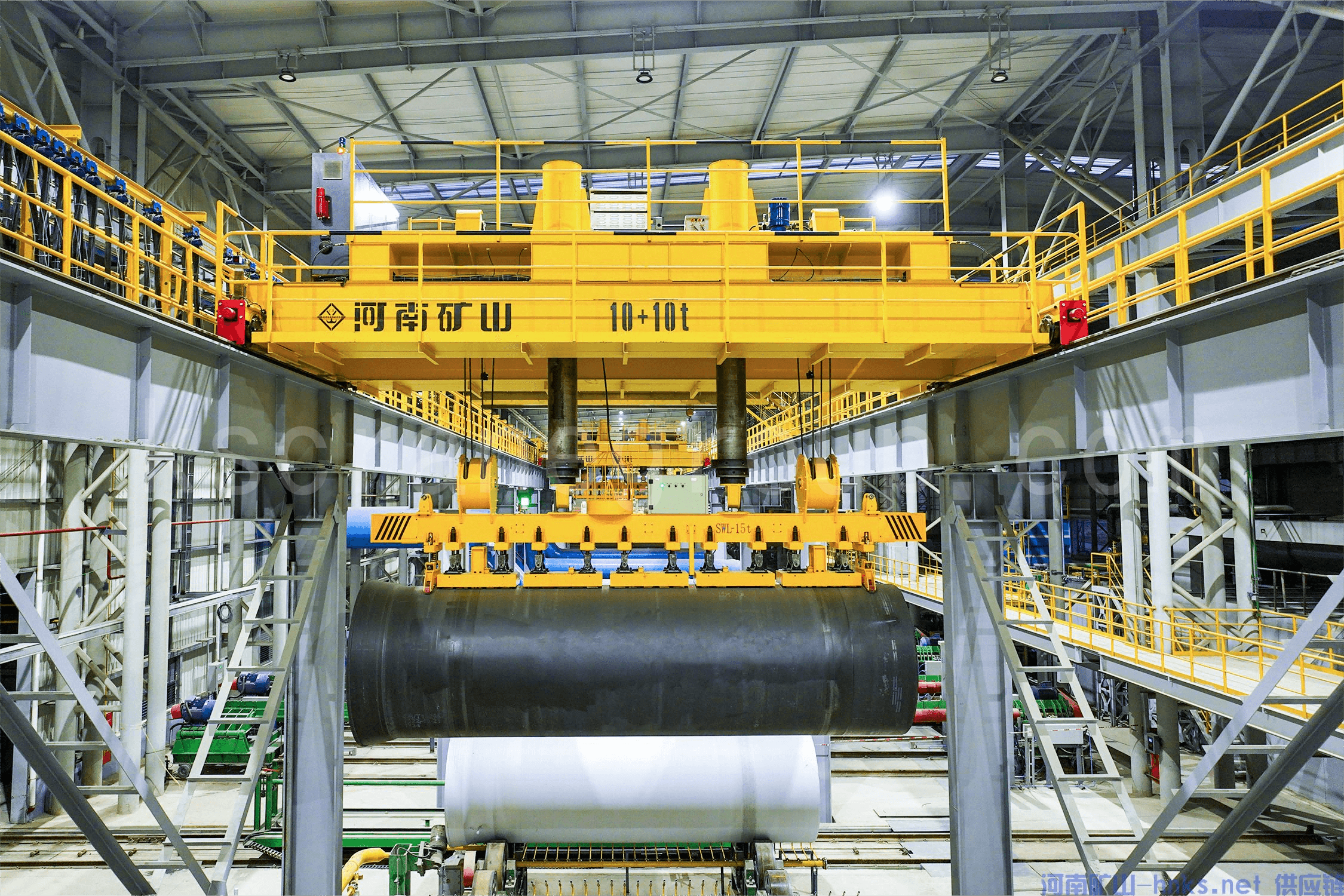
- Dependent on power supply conditions
The crane cannot operate without a power source, making it constrained by the availability of electricity at the site. - No non-magnetic materials between metal products and electromagnet
There cannot be any non-magnetic substances, such as wood chips or sand, between the metal products and the electromagnet, as this would affect the lifting capacity. Dust or unwanted coatings on the materials can also create air gaps and reduce the crane’s lifting ability. - Lifting capacity affected by electromagnet conditions
The weight that an electromagnetic crane can lift is influenced by factors such as the temperature of the electromagnet, the shape and nature of the material, and the surface temperature. For example, as the temperature of the electromagnet gradually increases, the magnetic force weakens, leading to insufficient attraction and reduced production efficiency. - Potential deformation over prolonged use
Over extended periods of use, high temperatures and external forces may cause the electromagnet to deform, diminishing its lifting capacity.
Conclusion
In summary, the advantages of electromagnetic cranes are that it is an efficient, safe, and stable lifting device, and is widely used in steel, shipbuilding, machining, and other industries. However, it’s important to focus on energy conservation, regular inspections, and maintenance to ensure the safety and stability of lifting operations.
Currently, electromagnetic cranes have become an indispensable piece of equipment in modern industrial production. Many of the top 10 bridge crane manufacturers in the world are also developing and producing electromagnetic cranes, including Finland’s KONECRANES, America’s GH, and China’s Kuangshan Crane.
Henan Kuangshan Crane Co., Ltd. is a professional manufacturer and service provider of electromagnetic cranes. The advantages of electromagnetic crane in Henan Kuangshan are as follows:
- The crane adopts a fully sealed structure with excellent moisture resistance. The non-magnetic protective plate is made of rolled manganese steel, which offers good weldability, excellent magnetic shielding, wear resistance, and impact resistance.
- The product is designed through computer optimization by incorporating advanced foreign technology and undergoing improvements and innovations. It features a reasonable structure, is lightweight, has strong suction power, and has low energy consumption.
- The coil has undergone special processing to enhance its electrical and mechanical performance. The insulation material’s heat resistance has reached Class C, ensuring a long service life.
- The duty cycle of standard electromagnets has been increased from 50% to 60%, improving the efficiency of the electromagnet.
- The ultra-high-temperature electromagnet employs unique heat insulation and thermal radiation protection measures, increasing the temperature of the material it can attract from 600°C to 700°C, thereby expanding the applicable temperature range of the electromagnet.
With the R&D advantages and complete industrial chain we have accumulated over 20 years, we have provided the highest cost-performance products and services to tens of thousands of customers in 122 countries worldwide. If you have any crane-related needs, don’t hesitate to contact us for the latest quotes and professional services.
Do you like what we do?Share it























































